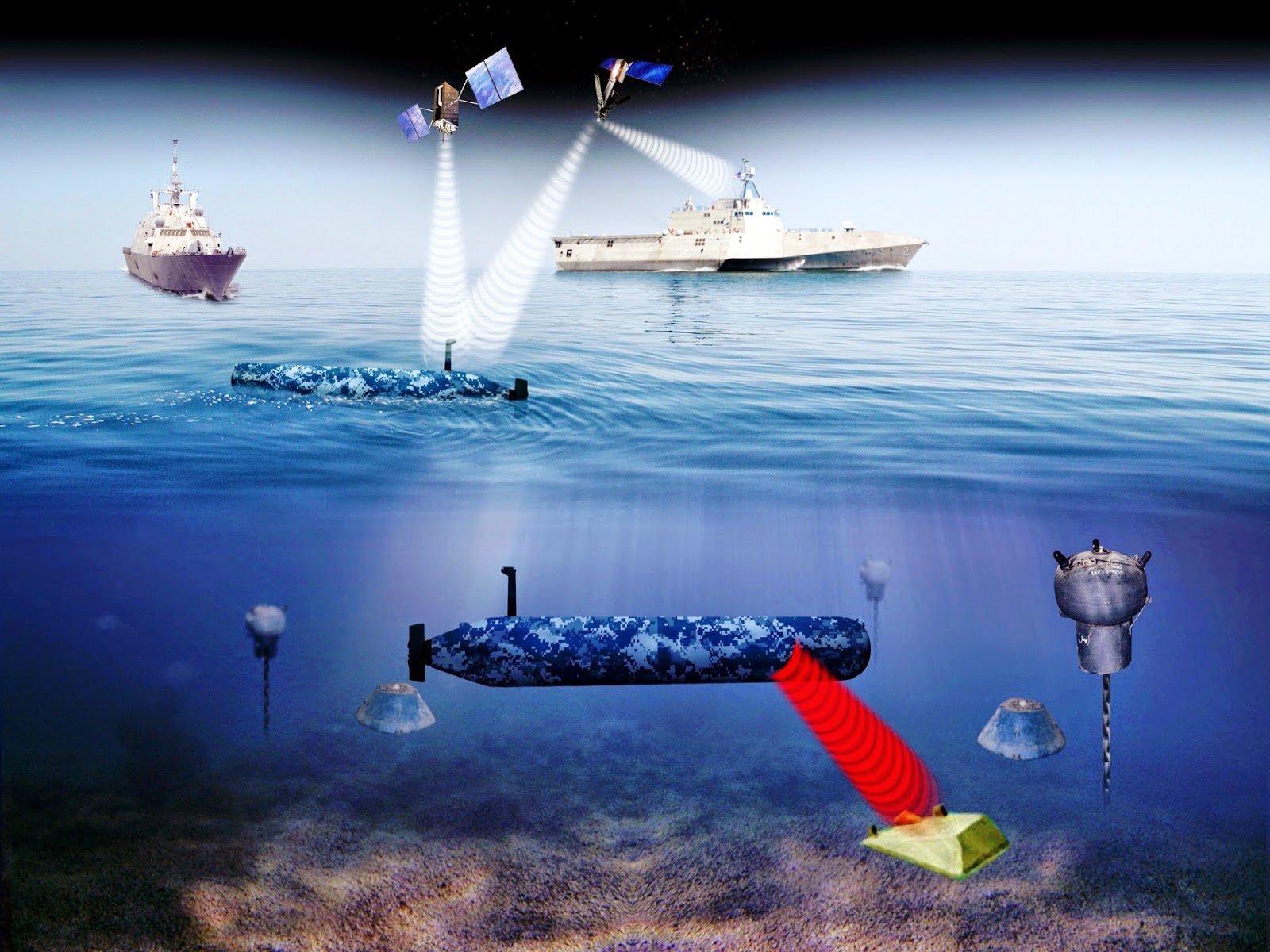
The Navy’s Knifefish unmanned undersea vehicle, a key component of the Littoral Combat Ship’s mine-hunting capability, successfully completed sea acceptance testing off the coast of Massachusetts.
The Knifefish, built by General Dynamics and based on the Bluefin Robotics Bluefin-21 deep-water Autonomous Undersea Vehicle, is a self-propelled, untethered vehicle designed to hunt for mines without requiring an LCS or other manned ship to enter a minefield.
By successfully completing the sea acceptance testing, the program now moves to the next phase of development – developmental test and operational assessment – according to General Dynamics.
“These tests prove the Knifefish system can detect, classify and identify undersea mines in high-clutter environments,” Carlo Zaffanella, vice president and general manager of General Dynamics Mission Systems, said in a statement.
Meanwhile, the first group of Navy fleet operators have completed their initial Knifefish training, conducted by the General Dynamics team, so they can operate the system during the upcoming developmental test and operational assessment.
Unlike other autonomous vehicles that tow a sonar, Knifefish has a sonar built into its body. But the Knifefish program has been hampered by previous concerns about its range and endurance.
In 2016, delays in reaching important production milestones, a $2.3-million fix to the communications system that helps Knifefish talk to operators aboard LCSs, and ongoing problems with Knifefish’s ability to accomplish its core mission – detecting mines – resulted in a 2016 Department of Defense Inspector General report recommending the Navy consider canceling the program if the problems could not be ironed out by the end of 2017.
If the Navy could not revalidate that Knifefish was the right solution to identify buried and other mines, then the IG recommended the Navy was better off canceling the program and finding a “better use” for the $751.5 million dedicated to Knifefish research, development, testing, evaluation and acquisition.
By the end of 2017, General Dynamics and the Navy had worked out the program’s bugs sufficiently to declare a successful completion of contractor trials, according to a statement released by General Dynamics at the time.
“The Navy is pleased with the Knifefish performance during the recent contractor trials, as the system demonstrated its ability to reliably find mines in different environments,” Capt. Jon Rucker, unmanned systems program manager within the Program Executive Office for Unmanned and Small Combatants (formerly PEO LCS), stated in the 2017 General Dynamics news release.
“Knifefish provides the Navy a critical means to find and identify bottom, buried, and volume mines, providing a much-needed capability for the warfighter.”





